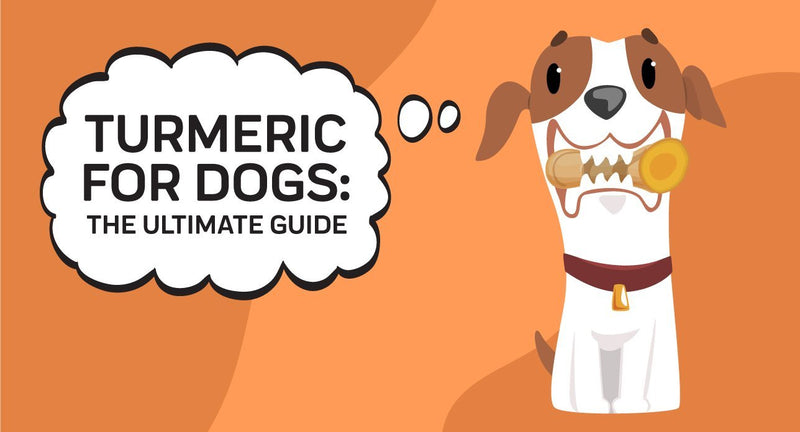- 1. What Is Phenobarbital For Dogs?
- 2. How Does Phenobarbital Work?
- 3. Common Causes Of Seizures In Dogs
- 4. Four main types of seizures
- 5. Side Effects Of Phenobarbital For Dogs
- 6. Side Effects
- 7. Drug Interactions With Phenobarbital
- 8. When To Stop Taking Phenobarbital
- 9. Alternatives To Phenobarbital For Dogs
- 10. CBD For Dogs
Phenobarbital is a fairly common prescription medication in humans and animals alike, used to treat seizures in younger children and pets. It can be administered orally or through an injection. It takes hold relatively quickly and the effects last for a few days. Phenobarbital works by helping control electrical activity that occurs during a seizure.
The majority of seizures are caused by abnormal electrical activity in your dog's brain. Neurons begin misfiring, leading to spasmodic jerks and contractions throughout your dog's body. Phenobarbital reduces the electrical activity of your pet's brain, reducing the likelihood that they will have a seizure. Much less commonly, though, phenobarbital may also be used to help dogs with anxiety or sleep issues. These instances involve short term prescriptions, however, rather than long term use of the medication.
Phenobarbital is usually administered once per day, typically at night. It comes in both tablet and liquid form and should be administered with food if possible. In cases of dogs with more severe epilepsy, they may end up taking dosages twice per day.
It's very important that once your dog begins taking phenobarbital that dosages are not missed. Missed dosages have a tendency to trigger epileptic episodes. Your vet
A seizure is an unexpected surge of neuron activity within your dog's brain. It can affect the way your dog feels, behaves, and moves. Most commonly, a seizure will look like convulsing spasms that last for a couple of minutes. Occasionally, instead of convulsing, dogs will simply go unconscious. This will look like your dog is walking around, going about their day, and then out of nowhere, they collapse unconscious.
Phenobarbital works by suppressing the overall electrical activity of your dog's brain. It's effective in around 60% to 80% of dogs. If your dog's brain activity is generally low, then even when it sparks due to epilepsy, it isn't high enough to cause a seizure - this is the underlying concept of phenobarbital as well as most epileptic medications.
Phenobarbital is one of the more popular prescriptions for seizures due to its low cost and effectiveness. Despite the fact that phenobarbital is not FDA approved for use with dogs, still one of the first medications that veterinarians will recommend for epileptic dogs. It takes around two weeks of use for phenobarbital to begin taking effect in a dog since the levels of phenobarbital in your pet's bloodstream need to reach a certain level.
If your dog is still having semi-frequent seizures after having been on phenobarbital for
Fortunately, seizures aren't too common in dogs, only occurring in about 0.5% of all canines - or one in every two hundred dogs. Seizures are not a disease in and of themselves, but rather a symptom of another underlying issue. Sometimes this is

Grand Mal
These are the most common kinds of seizures in dogs, and unfortunately, they are the most dangerous. Grand Mal seizures affect your pet's entire body, causing them to convulse and spasm. These seizures can last anywhere from a few seconds to several minutes and can be especially dangerous if happening back to back.
Focal
A focal seizure is one that occurs in a specific region of your dog's body. They occur when the abnormal surge of electrical activity in a dog's brain is local to a specific area. This causes the seizure to only affect one of your dog's limbs or one side of their body.
Psychomotor
Psychomotor seizures are seizures that affect your dog's behavior rather than their bodily movements. You may notice that your dog is acting oddly, running around, chasing imaginary objects, and seeming to be on edge. In humans, psychomotor seizures can manifest themselves as night terrors, where an individual is in a dreamlike state while awake and moving around. Psychomotor seizures are harder to identify, especially in dogs.
Breeds prone to epilepsy
While any dog at any age can develop epilepsy, there are few breeds that have a higher predisposition for having epileptic episodes. Breeders are generally pretty good about removing epileptic dogs from the gene pool, but this doesn't guarantee that epilepsy won't be passed down through a breed.
Some of the breeds that most frequently experience epilepsy include:
- Saint Bernards
- Border collies
- German shepherds
- Beagles
- Keeshonds
- Golden retrievers
- Labrador retrievers
- Vizslas
- Shelties
- Belgian Tervurens
- Bernese mountain dogs
Keep in mind that just because a particular breed of dogs is on this list, it doesn't mean
Unfortunately, seizure medications tend to have some of the worst side effects for their users, and phenobarbital is no exception. Phenobarbital is what's known as an "extra-label" drug. This means that it is approved for use on humans by the FDA, but not approved for use on animals. Veterinarians are allowed to use extra-label drugs

Sedation
Sedation is the most common side effect of phenobarbital. This is because of the way that phenobarbital works. The medication suppresses your dog's brain activity to reduce the likelihood that they will have a seizure. However, this also reduces their energy levels, causing them to be more lethargic and sedentary. If your dog is sedated while using phenobarbital, they may need to lower their dosage or switch to a different medication altogether. Sedation is also relatively common when a dog is just beginning to use phenobarbital. This is normal and expected, and should go away after the first few weeks of use. If your dog is still sedated after the first few weeks, however, consult with your vet about resolving the issue.
Excessive Appetite/Thirst
Phenobarbital can also cause your pet's appetite and thirst to increase. An increased appetite can be dangerous, as weight gain is a serious health issue with dogs. Fortunately, this is relatively easy to manage since all you need to do is monitor and control their food intake. Excessive thirst is less problematic, though it can lead to an increase in your dog using the bathroom inside. If your dog is drinking more while on phenobarbital, you might need to take them outside more often than before.
Restlessness
On the other end of the spectrum, dogs taking phenobarbital may appear more restless and hyperactive. This may look like excessive activity, your dog becoming more vocal, panting even when your dog is inactive, and otherwise being high strung.
Liver Damage
A more serious side effect of phenobarbital is liver damage. Long term use of phenobarbital (more than three months) can cause liver damage to occur to your dog. This can manifest in a variety of symptoms, including weight loss, jaundice, dark liver, and abnormal stools.
Phenobarbital and Liver Damage
Phenobarbital has been linked to liver damage in dogs that use the medication over a long period of time - more than three months. If your dog's blood serum levels of phenobarbital are over 45 mcg/ml, then your dog is likely experiencing liver damage from phenobarbital. A healthy dosage of this medication should be around 30 mcg/ml. In order to make sure that your dog is getting the proper dosage of phenobarbital, check in with your vet every six months for new blood tests.
Damage to the liver by phenobarbital can cause scarring, liver disease, and possibly liver damage. While this tends to occur in a relatively small number of dogs, the potential risks are still there. If the damage is caught early enough, the damage can be reversed by reducing dosages or switching medications altogether. If the damage is not caught soon enough, though, it can become permanent and potentially fatal.
Being proactive is the best way to reduce the chances that your dog will experience severe liver damage from phenobarbital. Rather than waiting for symptoms of liver damage to occur, take your dog to the vet on a regular basis for bloodwork to make sure that their phenobarbital levels are still within a healthy range.
The earliest signs of liver damage involve issues related to your dog's appetite. They may be excessively hungry or - on the opposite end - reluctant to eat. Dogs with liver issues might start losing weight as well and could drink more water than normal. Later on, more serious symptoms will start to surface, like jaundice, swollen stomach, dark brown urine, and lethargy. These later symptoms could indicate that your dog is experiencing liver failure.
The Risks Of Phenobarbital
Liver damage is one of the most serious risks of phenobarbital use in dogs. High dosages over a long period of time can overwork and poison the liver, eventually leading to severe health conditions - including liver failure. However, liver failure is not the only health condition that can arise from long term use of phenobarbital.
While it is effective for treating seizures, phenobarbital is a harsh drug and shouldn't be given to your pet if they have any of the following conditions:
- Anemia
- Liver disease
- Kidney disease
- Heart disease
- Addison's disease
- Hypovolemia
- Hypoadrenocorticism
- Respiratory issues
All of these existing conditions can be worsened through frequent phenobarbital use. When consulting with your vet, make sure that they are aware of any of these conditions that your dog may have, as well as any other conditions that aren't mentioned on the list. There are plenty of alternative epilepsy treatments available, so there is no need to have your dog stuck on a harmful medication.
All of the issues that phenobarbital can create are entirely preventable. Frequent monitoring of your dog's phenobarbital levels is a vital component of making sure that they are in good health while using this drug. Most of the symptoms of severe damage won't surface until the damage is already permanent, so it's better to err on the safe side and take precautions.
While it is possible for your pet to go into epilepsy remission, this takes several years, which means several years of phenobarbital therapy. Because of this fact, you need to ensure that it's doing as little damage to their system as possible. If you are

Like any medication that your dog is on, drug interactions will need to be taken into consideration. If your dog is on any medication prior to being prescribed phenobarbital - whether it be prescription, over the counter, supplements, etc. - your vet will need to know what they are taking before you begin phenobarbital therapy.
Most notably, phenobarbital increases the activity of your dog's liver. This means that medications that normally take effect by being broken down by the liver will likely be less effective. Depending on the medication, your vet may recommend that you increase the dosage of that medication or switch to something more potent.
On the other side of the spectrum, some drugs may become more effective or cause phenobarbital to become more effective when used in conjunction with one another. When this happens, your vet may recommend that you lower the dosage of each to bring things back down to a healthy level. There may also be times when phenobarbital simply isn't an option because of the way it interacts with certain drugs, so if your dog is already on medications prior to visiting the vet about epilepsy, be prepared to be prescribed something other than phenobarbital.
The following medications are all likely to have interaction when taken alongside phenobarbital:
- Certain anticoagulants
- Estrogen agents
- Progestins
- Beta-blockers
- Corticosteroids
- Tricyclic antidepressants
- Opiate agonists
- Phenothiazine
- Aminophylline
- Chloramphenicol
- Doxycycline
- Furosemide
- Griseofulvin
- Antihistamines
- Quinidine
- Rifampin
Keep in mind that this isn't an exhaustive list of the medications that can interact with
Not all dogs will need to take phenobarbital for the entirety of their lives. Many are able to enter epilepsy remission after just a few years of going through phenobarbital therapy. If you think that your dog may be ready to end their epilepsy treatment, consult with your veterinarian before taking them off of the medication. As mentioned earlier, unexpectedly taking your pet off of phenobarbital can result in a seizure. So consult with your vet and follow their directions on removing phenobarbital from your pet's routine.
If your dog has been completely seizure-free for two to three years, they are a good candidate for ceasing phenobarbital treatment. This is especially true if your dog has been suffering from the side effects of the medication. If you've noticed that your dog has been having worse reactions to the drug while also not having had any seizures over a long period of time, then it is likely a good time to try taking a break from phenobarbital therapy.
There are instances other than when your dog is in epilepsy remission that you will need to consider ceasing phenobarbital treatment, and that's usually when the side effects become so severe that your dog's health is in danger. While this usually only occurs after improper dosing, some dogs simply aren't able to handle the medication.
If you find yourself in a situation like this, where your dog is clearly suffering as after
Phenobarbital is the go-to epilepsy prescription for several vets for a few reasons. Of course, the biggest reason is that it works. The majority of dogs will have a positive experience with phenobarbital treatment, so it's a great option to start a dog on. It's also inexpensive compared to many alternatives, which is important since the prescriptions usually last for a few years.
That said, there are dogs that simply aren't compatible with this drug. Other prescriptions, preexisting conditions, and other factors might lead a vet to prescribe your pet another solution to epilepsy. Potassium bromide is a popular alternative to phenobarbital, especially in cases when your pet's epilepsy is less severe. Like phenobarbital, it works by reducing the amount of activity in your dog's brain, preventing seizures.
The major difference between the two drugs is that it takes much longer to build up the potassium bromide levels in your dog's blood than it does to build up phenobarbital levels. This means that your dog might not experience any epileptic relief until four months of potassium bromide therapy. For this reason, phenobarbital and potassium bromide are often used in tandem with one another.
Levetiracetam is another potential alternative to phenobarbital. It's a newer medication, but it is quickly gaining traction in the veterinary industry. However, because of its newness, there are still many unknown factors that vets are learning. An example of this is that vets are beginning to discover that dogs and cats seem to
Another popular alternative to phenobarbital is CBD. CBD is relatively new as a supplement for several health conditions, but research throughout the medical field is extremely promising. CBD has numerous health benefits, one of which includes reducing the frequency of seizures.
In higher dosages,CBD can be used to reduce the frequency of seizures and even interrupt them as they are happening, with little to no side effects. Most dogs have a healthy tolerance to the supplement, and even those that don't are only ever likely to experience a slight lethargy. It is important to keep in mind, though, that CBD is a relatively new supplement and shouldn't be used without first consulting a vet. It is also less effective than traditional epilepsy treatments and will need to be delivered and relatively high dosages to make a difference in epileptic dogs. CBD works in dogs by stimulating your pet's ECS system. This system is responsible for regulating several processes within your dog's body, including things like appetite, mood, sleep, and immunity. When your pet takes CBD, it interacts with this system, causing it to work more effectively. The result is multiple positive changes in your animal's health, as well as the overall homeostasis of your dog's system. This homeostasis is the primary source of health benefits in dogs that routinely take CBD supplements.
Aside from treating epilepsy, CBD can also help reduce a dog's anxiety, improve their mood, bring back their appetite, treat conditions like glaucoma and IBD, and lower the pain levels of conditions like arthritis.
Sources:
Maintenance Anticonvulsant or Antiepileptic TherapySeizure Management in Small Animal Practice
Effect of Chronic Administration of Phenobarbital

Ivana Vukasinovic grew up in Serbia and attended the University of Belgrade where she received a degree in Veterinary medicine in 2012 and later completed surgical residency working mostly with livestock. Her first year of practice was split between busy small animal practice and emergency clinic, and after two more years of treating many different species of animals, she opened her own veterinary pharmacy where an interest in canine and feline nutrition emerged with an accent on fighting animal obesity. In her free time, she acts as a foster parent for stray animals before their adoption, likes to read SF books and making salted caramel cookies.
Thanks for stopping by!
P.S. We Love You!
Sincerely,
The Innovet Team
Please do not ask for emergency or specific medical questions about your pets in the comments. Innovet Pet Products is unable to provide you with specific medical advice or counseling. A detailed physical exam, patient history, and an established veterinarian are required to provide specific medical advice. If you are worried that your pet requires emergency attention or if you have specific medical questions related to your pet’s current or chronic health conditions, please contact or visit your local/preferred veterinarian, an animal-specific poison control hotline, or your local emergency veterinary care center.
Please share your experiences and stories, your opinions and feedback about this blog, or what you've learned that you'd like to share with others.

















